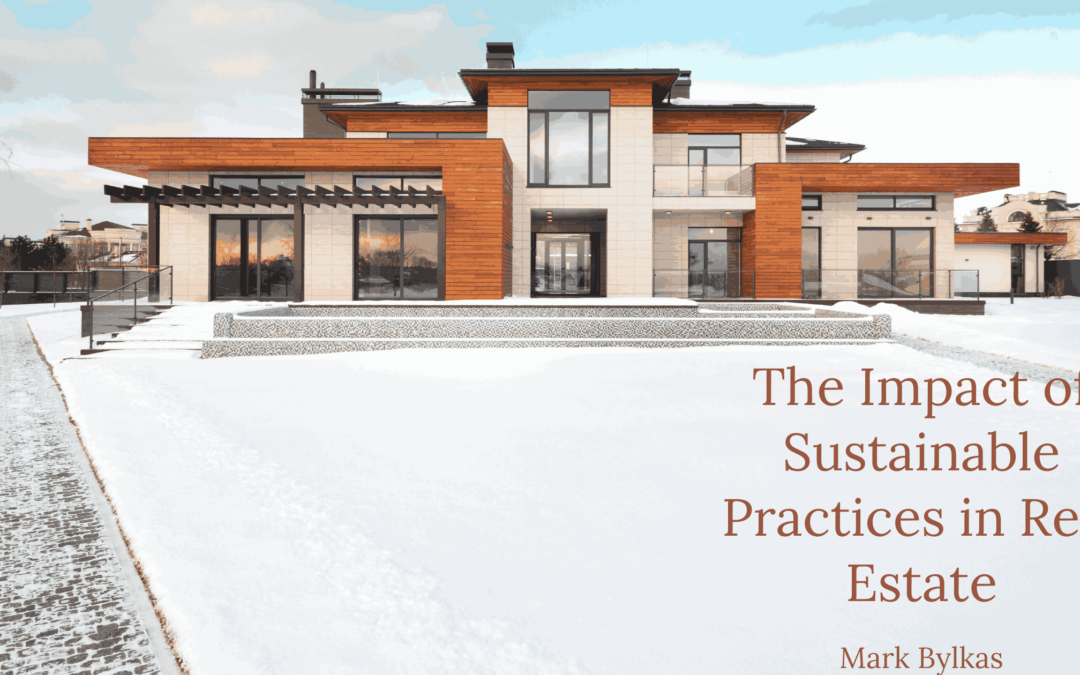Sustainability is no longer just a buzzword; it’s a driving force reshaping the real estate industry. With increasing environmental concerns, stricter regulations, and growing consumer demand for eco-friendly solutions, adopting sustainable practices has become a necessity for real estate developers, investors, and homeowners. In this blog, we’ll explore the role of sustainability in real estate, the benefits it offers, and the challenges it poses.
What is Sustainable Real Estate?
Sustainable real estate focuses on minimizing the environmental impact of buildings and enhancing their efficiency. This involves using eco-friendly materials, optimizing energy and water usage, and designing spaces that promote long-term environmental and economic sustainability.
Key Components of Sustainable Real Estate
- Energy Efficiency
- Using renewable energy sources like solar or wind power.
- Installing energy-efficient appliances, LED lighting, and smart thermostats.
- Water Conservation
- Incorporating rainwater harvesting systems and low-flow fixtures.
- Recycling water for landscaping and other non-potable uses.
- Green Building Materials
- Using sustainable materials like bamboo, reclaimed wood, and recycled steel.
- Avoiding materials with high carbon footprints or toxic chemicals.
- Waste Reduction
- Designing buildings with minimal construction waste.
- Encouraging recycling and composting within properties.
- Eco-Friendly Design
- Implementing green roofs, natural ventilation systems, and abundant natural lighting.
- Designing layouts to maximize energy savings and reduce heat loss.
The Benefits of Sustainable Real Estate
- Environmental Benefits
- Reduces greenhouse gas emissions and energy consumption.
- Minimizes waste and conserves natural resources.
- Economic Advantages
- Lower operational costs due to reduced energy and water bills.
- Higher property values as sustainable buildings attract eco-conscious buyers.
- Tax incentives and rebates for adopting green technologies.
- Health and Well-Being
- Improved indoor air quality by using non-toxic materials.
- Access to natural light and ventilation enhances residents’ mental and physical health.
- Market Competitiveness
- Sustainability is increasingly viewed as a key differentiator in real estate.
- Green-certified properties often sell or rent faster than conventional buildings.
Certifications for Sustainable Buildings
Several certifications help identify and promote eco-friendly buildings, including:
- LEED (Leadership in Energy and Environmental Design): Recognizes energy-efficient and sustainable buildings.
- BREEAM (Building Research Establishment Environmental Assessment Method): Focuses on overall sustainability.
- WELL Certification: Emphasizes occupant health and well-being.
- Green Star: Popular in Australia and focuses on environmental sustainability.
These certifications add value to properties and reassure buyers of their eco-friendly credentials.
Challenges in Adopting Sustainable Practices
- Higher Initial Costs
- Sustainable construction materials and technologies can be more expensive upfront.
- Retrofitting older buildings to meet green standards may require significant investment.
- Knowledge Gap
- Lack of awareness among developers and buyers about the benefits of sustainability.
- Limited expertise in designing and executing green projects.
- Regulatory Hurdles
- Navigating complex zoning laws and environmental regulations can delay projects.
- Inconsistent policies across regions create challenges for large-scale adoption.
- Market Resistance
- Some buyers and investors prioritize immediate returns over long-term benefits.
- Misconceptions about the feasibility and affordability of sustainable practices.
Trends in Sustainable Real Estate
- Net-Zero Buildings
- Properties designed to produce as much energy as they consume.
- Achieved through renewable energy sources, efficient designs, and advanced technologies.
- Smart Cities
- Urban areas that integrate IoT, AI, and renewable energy to create efficient and sustainable environments.
- Examples include Songdo, South Korea, and Masdar City, UAE.
- Circular Construction
- Emphasizing reusing and recycling materials to minimize waste.
- Designing buildings for easy disassembly and material recovery.
- Carbon Offsetting Initiatives
- Developers planting trees or investing in renewable energy projects to offset construction emissions.
How Investors Can Benefit from Sustainable Real Estate
- Long-Term Returns
- Sustainable properties often experience consistent value appreciation due to growing demand.
- Energy savings lead to better cash flow for rental properties.
- Enhanced Reputation
- Investing in sustainable projects improves brand image and attracts environmentally conscious tenants.
- Government Incentives
- Subsidies, tax credits, and grants for green buildings boost profitability.
Sustainability is shaping the future of real estate, offering benefits that extend beyond the environment to include economic gains, health improvements, and enhanced market appeal. While challenges remain, the growing demand for eco-friendly buildings and technological advancements are making sustainable real estate more accessible and viable. By adopting these practices today, investors and developers can contribute to a greener planet while reaping significant financial rewards.

